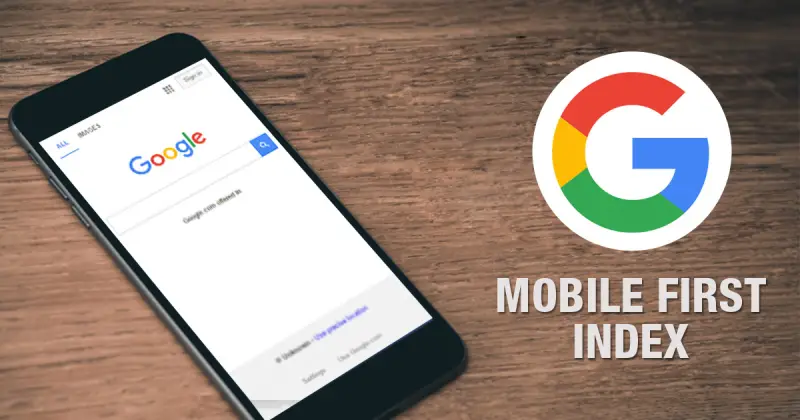Mobile-first indexing is no longer a trend; it is the standard. Google has been prioritizing mobile-friendly websites for years, and with mobile-first indexing in full effect, ensuring that your website is optimized for mobile users is essential for maintaining and improving search rankings. Whether you are running an e-commerce site, a blog, or a business website, failing to optimize for mobile-first indexing can lead to reduced visibility and lower engagement.
In this guide, we will explore the best strategies to optimize your website for mobile-first indexing in 2024, ensuring a seamless experience for mobile users while maintaining high rankings on Google. We will cover everything from responsive design to page speed optimization, content best practices, structured data, mobile-friendly navigation, and more.

Understanding Mobile-First Indexing
Mobile-first indexing means that Google primarily uses the mobile version of your website for ranking and indexing. If your site has both a desktop and a mobile version, Googlebot will crawl and evaluate the mobile version first. Websites that are not optimized for mobile users may experience a decline in rankings, making it crucial to ensure mobile usability.
Why is Mobile-First Indexing Important?
The shift towards mobile-first indexing is driven by the changing behavior of internet users. Over the past decade, mobile devices have surpassed desktops as the primary way people access the web. Here are the key reasons why mobile-first indexing is critical:
- Mobile Traffic Dominance – More than half of global web traffic comes from mobile devices, making it crucial for websites to be optimized for mobile users.
- Google’s Preference – Google has officially transitioned to mobile-first indexing for all websites, meaning that your mobile site is now the primary version Google considers for rankings.
- User Experience – A mobile-optimized site leads to better user engagement, lower bounce rates, and higher conversion rates, as users are more likely to stay on a site that functions well on their devices.
- Competitive Advantage – Businesses that embrace mobile optimization gain a competitive edge over those that neglect it, leading to improved search visibility and higher customer satisfaction.
Steps to Optimize Your Website for Mobile-First Indexing
Ensure a Responsive Web Design
Google recommends using a responsive web design because it provides the best user experience across all devices. A responsive design ensures that your content and layout adjust automatically based on the screen size.
A well-implemented responsive design prevents the need for maintaining separate desktop and mobile versions of your website. Here’s how to achieve a responsive design:
- Use flexible grid layouts that adjust to different screen sizes.
- Implement CSS media queries to make design elements adaptable.
- Ensure that images and videos scale properly without distortion.
- Avoid using fixed-width elements that do not adapt to different devices.
- Use mobile-friendly fonts and spacing for easy readability.
A fully responsive website ensures a seamless experience whether users access it on a smartphone, tablet, or desktop computer.
Optimize Page Speed for Mobile Users
Mobile users expect fast-loading pages. Google’s Core Web Vitals consider page speed a ranking factor, so optimizing for performance is essential. Page speed impacts user engagement, bounce rates, and conversion rates. Here’s how to improve your site’s mobile speed:
- Enable browser caching to store static files for returning visitors.
- Optimize images by compressing them without sacrificing quality. WebP format is a great alternative to reduce file size while maintaining clarity.
- Minimize JavaScript and CSS to prevent rendering delays. Unnecessary scripts slow down loading times, so use minification tools to compress files.
- Leverage a Content Delivery Network (CDN) to distribute content across multiple servers and reduce latency.
- Use asynchronous loading for CSS and JavaScript to prevent blocking rendering.
- Optimize server response time by choosing high-performance web hosting.
A fast-loading website enhances the user experience, reduces bounce rates, and increases conversions, making it a crucial aspect of mobile-first optimization.
Improve Mobile Usability
A poor mobile experience can drive users away. Use Google’s Mobile-Friendly Test tool to check how well your site performs on mobile devices.
Key factors to improve mobile usability include:
- Readable fonts and appropriate font sizes – Avoid small fonts that require zooming.
- Avoid intrusive pop-ups – Google penalizes sites that use pop-ups interfering with user navigation.
- Ensure tap targets (buttons, links) are properly spaced – Small buttons can frustrate users, so make sure they are large enough to be easily tapped.
- Implement simple and intuitive navigation – Mobile users should easily find what they are looking for without unnecessary scrolling.
- Use a sticky navigation bar – This helps users quickly access key sections of the site.
Improving mobile usability ensures that visitors stay on your website longer, increasing the likelihood of engagement and conversions.

Ensure Consistency Between Mobile and Desktop Content
With mobile-first indexing, discrepancies between your desktop and mobile content can hurt your rankings. Ensure that the mobile version contains the same high-quality content, images, and structured data as the desktop version.
- Do not hide content on mobile that is visible on desktop.
- Ensure meta tags, alt text, and schema markup are present on both versions.
- Use the same headings, structured data, and internal linking structure.
- Verify that mobile users can access all images and videos without distortion.
Implement Mobile-Friendly Structured Data
Schema markup helps search engines understand your content better. Ensure that your structured data is optimized for mobile.
- Use JSON-LD format for structured data.
- Verify mobile-friendly structured data using Google’s Rich Results Test.
- Ensure breadcrumb markup is present for easy navigation.
- Use schema markup for local businesses, products, reviews, and FAQs to enhance search visibility.
Optimize for Google Mobile Indexing
Make sure that Googlebot can efficiently crawl and index your mobile site.
- Use the same robots.txt directives for both versions.
- Ensure that important resources (CSS, JavaScript, images) are accessible to Googlebot.
- Use a mobile-friendly sitemap and submit it to Google Search Console.
Conduct Regular Mobile SEO Audits
SEO is an ongoing process, and regular audits help ensure that your mobile optimization efforts remain effective.
- Use Google Search Console to check mobile usability errors.
- Monitor Core Web Vitals to ensure optimal page performance.
- Regularly test your site with Google’s Mobile-Friendly Test tool.
- Check for broken links and redirects that may impact mobile navigation.
- Analyze mobile user behavior using Google Analytics to identify improvement areas.
Conclusion
Optimizing your website for mobile-first indexing is no longer optional—it is a necessity. With Google prioritizing mobile-friendly sites, ensuring that your website offers a seamless experience across all devices is crucial for maintaining rankings and user engagement. By following best practices such as responsive design, fast page speeds, mobile-friendly content, and structured data optimization, you can position your website for success in the mobile-first era.
The shift to mobile-first indexing is a long-term transformation. Businesses that proactively implement mobile optimization strategies will not only rank higher but also enhance the overall user experience, leading to increased customer satisfaction and conversions.
Start optimizing today to stay ahead in Google’s mobile-first indexing landscape!

